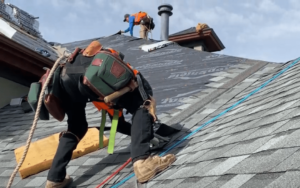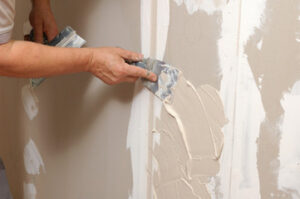A land survey is a scientific process that uses a variety of tools to create vectors, bearings, coordinates, elevations, areas and plans. It also involves interpreting data to produce CAD-drawn survey maps and legal descriptions.

Land surveyors are professionals that measure straight lines and right angles with specialized equipment. They then use this information to create a cadastral or survey-grade map of the parcel in question for legal documentation purposes. Contact Element Land Surveying for professional help.
Boundary surveys determine and delineate legal property lines. They help avoid neighborly disputes, promote peaceful development and land use, and ensure compliance with local zoning regulations. They also provide documentation for future property transactions and serve as objective evidence in court proceedings.
To perform a boundary survey, land surveyors start with on-site measurements and a thorough data collection process. They then compare this information with historical records to accurately pinpoint property boundaries. Using advanced tools and techniques, such as GPS technology and robotic instruments, they can measure distances and other parameters to calculate the exact location of property lines.
After collecting all of this data, the surveyor prepares a comprehensive report and map of the surveyed area. It includes all relevant information, including the surveyed boundaries, legal descriptions, referenced deeds, and surveyor’s certification. In addition, the report should include recommendations for resolving any issues that may arise from the survey. The final product is a clear and comprehensible document that can be used for legal purposes or property transactions.
Elevations
A topographical survey is one of the most common types of land surveys and focuses on changes in elevation. This type of survey provides valuable information that is essential for many purposes, including infrastructure planning and zoning laws. A topographical survey can also help us identify whether an area is prone to flooding or other environmental hazards, and it can provide valuable insights into the best way to use our property.
To determine elevations, a surveyor can measure the slope and distance between two points by using tools like laser measuring devices or pocket tapes. A more accurate method is to establish a bench-mark, or starting point, at a known elevation, such as 100 ft above sea level. From there, the surveyor can take a series of readings (or traverse) with a leveling staff, recording the results in a table.
Surveyors can use this data to calculate contour lines, which are areas where the land slopes or changes in elevation. This is important information for anyone who works with the land, from architects to engineers. It helps them design structures that are compatible with the terrain, reducing the need for costly modifications during construction. They can also predict any potential problems that might arise, such as water runoff or soil erosion, and make adjustments accordingly.
Setbacks
If you’re thinking of purchasing a property, it’s important to have it surveyed to determine the exact boundaries. This will help to prevent any disputes in the future and ensure that you don’t violate any setbacks. Land surveys also identify whether a property is located in a floodplain. These factors can affect the cost of a survey, so it’s important to evaluate your options and consider your needs before hiring a land surveyor.
Surveyors use a combination of traditional instruments and digital technology to produce surveys, data, and maps describing the Earth’s surface features. They apply elements of geodesy, geometry, trigonometry, regression analysis, physics, engineering, metrology, programming languages and the law to achieve their goals. They also use equipment such as total stations, robotic total stations, theodolites, GNSS receivers and 3D scanners.
Land surveying is the practice of establishing or reestablishing corners, lines, boundaries, and monuments on real property (land) based upon recorded documents and historical evidence. It includes associated services such as subdivision planning and design, writing legal descriptions, mapping, construction layout, and precision measurements of angle, length, area and volume. Surveyors also have extensive knowledge of zoning regulations and wetland delineation. In addition, they must have a strong understanding of computer software and Geographic Information Systems (GIS). These skills are essential in today’s land surveying industry.
Boundary disputes
Boundary disputes can arise from many factors, including a lack of clear legal descriptions in property deeds, encroachment, or disagreements between landowners. Disputes can escalate into costly legal battles and strain neighborly relationships, but professional land surveyors can help resolve them through careful analysis, precise measurements, and clear documentation of property lines.
They may also act as mediators or facilitators to encourage communication and compromise between neighbors. If dialogue and agreement fail to produce a satisfactory outcome, they can provide expert testimony based on their thorough analysis and adherence to industry standards.
Land surveyors also ensure that their work meets regulatory requirements set by local governments and state laws. This helps protect the interests of property owners and maintain the integrity of surveying practices.
It is important to have a legal property boundary survey before constructing new structures on your property. A survey will ensure that your construction does not encroach on the boundaries of other properties, which could result in costly lawsuits. Additionally, a property survey can be helpful in preventing future disputes. For example, if you have an old fence that is believed to be the property boundary, you can prevent a dispute by having your surveyor mark the actual property line with flags or monuments.
Construction layout
A construction layout survey is a type of land survey that provides information about the location of improvements based on a construction plan. This information is used by contractors to construct buildings, roads, and other infrastructure. It also ensures that structures are placed in their correct locations on a site. This is a crucial step in construction, and mistakes can have significant consequences for the project.
The purpose of construction staking is to help contractors locate their work based on the engineer’s or architect’s plans. A construction layout survey includes staking the foundation and footing locations and dimensions of buildings, as well as locating and indicating the placement of utilities (water lines, sewer lines, electrical conduits, and communication cables). It can also include center lines and offset points.
The first part of a construction layout survey is the staking of building corners and lot corners. This can be done with stakes, nails or flag markers. It is important that all known points are clearly marked so that they can be measured accurately. These marks should remain intact during excavation. This is accomplished by using batterboards, which are boards that provide a stable base for the stakes.
GIS
GIS (Geographic Information Systems) in Land Surveying is the integration of geospatial data into a system for storage and analysis. This allows for more accurate and cost-effective surveys. It also provides a powerful tool for analyzing and comparing data, and making better decisions. It’s one of the most valuable tools for today’s land surveyors.
Before the advent of GIS, land surveyors had to gather and analyze data manually using various methods. This process was time-consuming and tedious. Moreover, it was susceptible to human error. Consequently, it was not as effective as the current technology used in GIS.
With the help of GIS, a surveyor can create a digital map of the area that has been surveyed. This map can include details such as property lines, structures, and other features of the area. It can also be viewed in 3D. The mapping process is also much faster, and less expensive. Moreover, it helps in solving boundary issues and negotiating with neighbors. It also helps in planning construction work and preparing for drainage systems. It’s important for real estate developers to have this map in place before starting a project. It can help them avoid costly mistakes.
3D laser scanning
While other surveying methods require human measurements and site visits to capture data, 3D laser scanning is a faster, more accurate and cost-efficient way to gather information. It can capture millions of data points in minutes and create a 3D point cloud model that accurately depicts the scanned area. This helps to identify unforeseen aspects of a project and provides stakeholders with access to the data even if they are not physically present on site.
This technology is especially helpful for capturing complex areas and large structures that may be difficult to reach or measure using traditional methods. It also reduces health and safety risks, as it eliminates the need for staff to enter high risk or restricted environments to perform a scan. This can be particularly beneficial for urban environments, industrial locations and rail assets as well as commercial warehouses, steelwork and gantries.
In addition to providing a detailed visual record, 3D laser scanning can be used to develop 2D CAD drawings and 3D BIM models. This makes it easier for teams to find & avoid clashes, plan, assess progress and update record drawings with greater accuracy.








